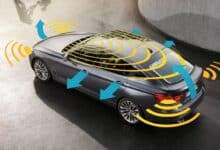Evaluating the Vehicle’s Autonomous Driving Capabilities: A Comprehensive Guide

In the era of rapid advancements in autonomous driving technology, evaluating a vehicle’s capabilities has become a crucial task for both enthusiasts and prospective buyers. “Evaluating the Vehicle’s Autonomous Driving Capabilities: A Comprehensive Guide” is your navigational tool in the intricate landscape of self-driving cars, offering insights and considerations for a thorough assessment.
This comprehensive guide is designed to empower you with the knowledge needed to critically evaluate the autonomous driving features of a vehicle. From understanding different autonomy levels to examining sensor technologies and assessing real-world performance, we’ll explore the multifaceted aspects that contribute to a vehicle’s autonomy.
Join us as we navigate through the complexities of autonomous driving, deciphering terminology such as LIDAR, radar, and computer vision. Whether you’re intrigued by the latest technological advancements or considering the purchase of a semi-autonomous or fully autonomous vehicle, this guide aims to provide a comprehensive understanding of the key factors that influence the evaluation of a vehicle’s autonomous driving capabilities. Let’s embark on a journey to demystify the world of self-driving cars, ensuring that you’re well-equipped to assess the capabilities of vehicles at the forefront of automotive innovation.

Contents
Understanding Levels of Autonomy
To evaluate a vehicle’s autonomous driving capabilities, it is essential to understand the different levels of autonomy defined by the Society of Automotive Engineers (SAE). These levels provide a standardized framework for classifying the degree of autonomy in vehicles. The SAE has defined six levels of autonomy:
- Level 0: No Automation – The vehicle is entirely controlled by a human driver without any assistance from the vehicle’s systems.
- Level 1: Driver Assistance – The vehicle provides specific driver-assist features, such as adaptive cruise control or lane-keeping assistance, but the driver retains full control.
- Level 2: Partial Automation – The vehicle can control both steering and acceleration/deceleration simultaneously under specific conditions, but the driver must remain engaged and monitor the environment.
- Level 3: Conditional Automation – The vehicle can perform most driving tasks under certain conditions, but the driver must be ready to take over when prompted by the system.
- Level 4: High Automation – The vehicle can operate autonomously in specific driving conditions or areas without needing driver intervention, but it may still require human input in exceptional circumstances.
- Level 5: Full Automation – The vehicle is capable of performing all driving tasks under all conditions without human intervention.
Understanding these levels will help you evaluate a vehicle’s autonomous driving capabilities more accurately.
See more: The Importance of Regular Maintenance for Your Vehicle’s Air Conditioning System
Sensor Suite and Perception System
The sensor suite and perception system are critical components that enable a vehicle to perceive and understand its surroundings. When evaluating a vehicle’s autonomous driving capabilities, pay close attention to the following sensors:
- Cameras: Cameras provide visual information and are essential for object detection, traffic sign recognition, and lane detection.
- LiDAR (Light Detection and Ranging): LiDAR sensors use lasers to measure distances and create detailed 3D maps of the environment, enabling accurate object detection and localization.
- Radar: Radar sensors use radio waves to detect objects and measure their distance, speed, and direction. They are particularly useful in detecting objects in poor weather conditions.
- Ultrasonic Sensors: Ultrasonic sensors help detect nearby objects, such as pedestrians or obstacles, by emitting sound waves and measuring the time it takes for them to bounce back.
A robust sensor suite combined with a powerful perception system is crucial for a vehicle’s autonomous driving capabilities. Ensure that the vehicle you are evaluating has a comprehensive sensor suite that covers all necessary aspects of perception.
Mapping and Localization
Accurate mapping and localization are fundamental for autonomous vehicles to navigate safely and efficiently. When evaluating a vehicle’s autonomous driving capabilities, consider the following:
- HD Maps: High-definition maps provide detailed information about roads, lanes, traffic signs, and other essential elements required for precise navigation.
- GPS and GNSS: Global Positioning System (GPS) and Global Navigation Satellite System (GNSS) technologies help determine a vehicle’s position accurately and provide localization information.
- Simultaneous Localization and Mapping (SLAM): SLAM algorithms enable a vehicle to build a map of its surroundings while simultaneously localizing itself within that map.
Verify that the vehicle utilizes advanced mapping and localization technologies to ensure reliable performance in various driving scenarios.
Should I Replace the Electronic Components in the Car Myself?
Decision-Making and Planning
Autonomous vehicles must make real-time decisions based on their perception of the environment. Evaluate a vehicle’s decision-making and planning capabilities by considering the following factors:
- Artificial Intelligence (AI): Autonomous vehicles rely on AI algorithms to analyze sensor data, interpret traffic situations, and make appropriate decisions.
- Machine Learning: Machine learning techniques help autonomous vehicles improve their decision-making abilities over time by learning from real-world driving experiences.
- Behavior Prediction: A capable autonomous vehicle can accurately predict the behavior of other road users, such as pedestrians or cyclists, to ensure safe interactions.
Examine whether the vehicle utilizes advanced AI algorithms and machine learning techniques to make informed decisions in complex driving scenarios.
Safety Features and Fail-Safe Mechanisms
Safety is paramount when it comes to autonomous driving. Evaluate a vehicle’s safety features and fail-safe mechanisms by considering the following:
- Redundancy: Autonomous vehicles should have redundant systems for critical functions like braking, steering, and perception to ensure continued operation even in case of component failures.
- Emergency Response: The vehicle should be equipped with emergency response mechanisms that can handle unexpected situations, such as system failures or sudden obstacles.
- Cybersecurity: Given the increasing connectivity in modern vehicles, robust cybersecurity measures are necessary to protect against potential hacking threats.
Ensure that the vehicle you are evaluating incorporates comprehensive safety features and fail-safe mechanisms to mitigate potential risks.
Regulatory Compliance
Autonomous driving technology is subject to various regulations and legal requirements. When evaluating a vehicle’s autonomous driving capabilities, consider the following:
- Local Regulations: Different regions may have specific laws governing autonomous vehicles. Verify whether the vehicle complies with local regulations before considering its autonomous capabilities.
- Testing and Certification: Autonomous vehicles often undergo extensive testing and certification processes to ensure their safety and compliance with industry standards.
It is crucial to ensure that the vehicle you are evaluating meets all necessary regulatory requirements for autonomous driving in your region.
Beyond the Wheel: A Comprehensive Guide to Evaluating a Vehicle’s Autonomous Driving Capabilities
Evaluating a vehicle’s autonomous driving capabilities requires a comprehensive understanding of its technology stack, safety features, regulatory compliance, and overall performance. By considering factors such as levels of autonomy, sensor suite, mapping and localization, decision-making algorithms, safety features, fail-safe mechanisms, and regulatory compliance, you can make an informed decision when selecting an autonomous vehicle. As technology continues to advance rapidly, it is essential to stay updated with the latest developments in autonomous driving to make the best choice for your transportation needs.
See more at: Car Care Vip





































